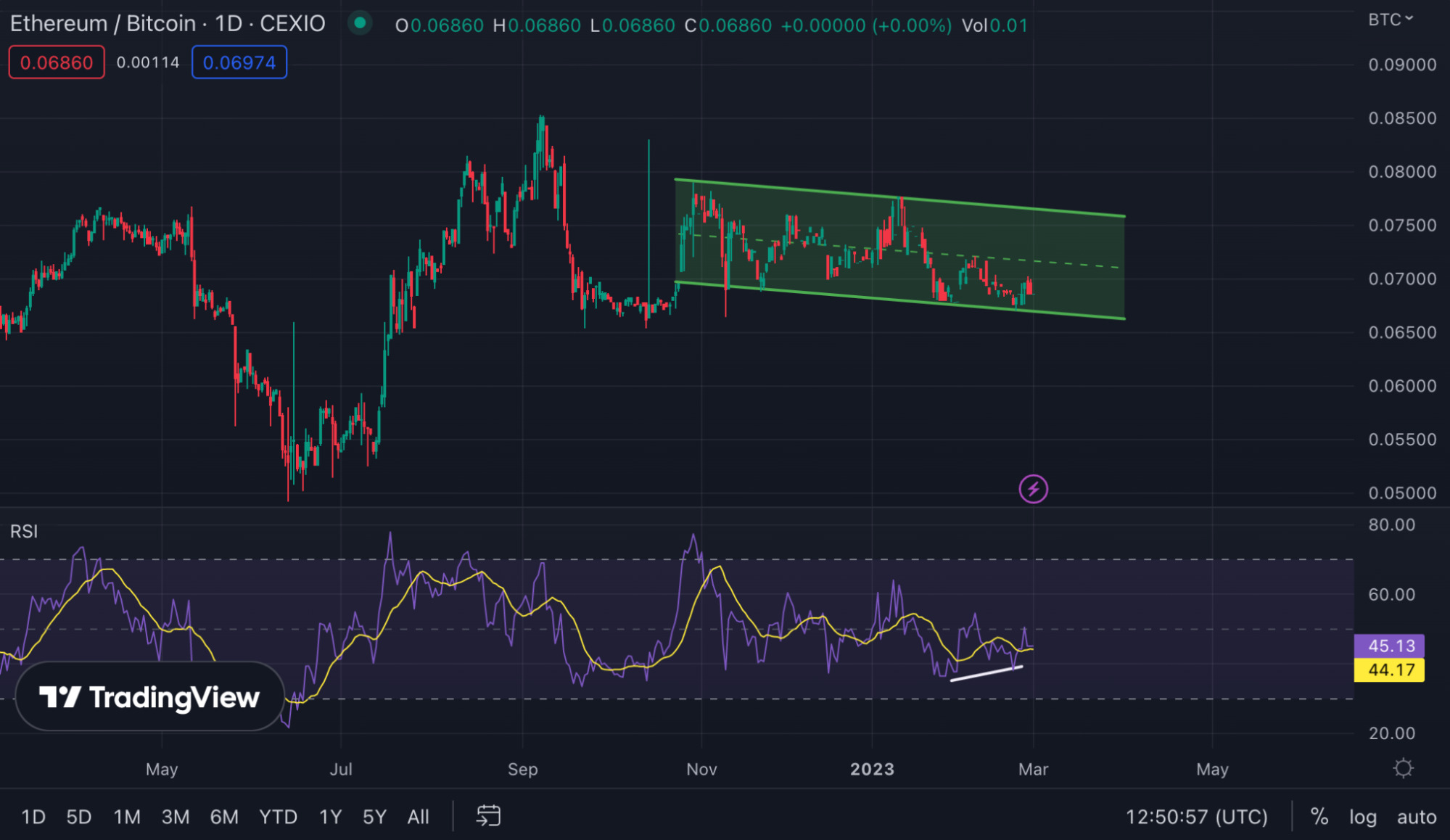Is Increased Ethereum Address Activity A Bullish Signal?

Table of Contents
Understanding Ethereum Address Activity
To accurately interpret the significance of increased Ethereum address activity, we must first understand what constitutes such an increase and how these metrics are measured.
What constitutes increased activity?
Several key metrics define increased activity on the Ethereum network. These include:
- New Addresses Created: The number of unique Ethereum addresses generated in a given period. A sharp rise suggests new users joining the network.
- Transaction Volume: The total number of transactions processed on the Ethereum blockchain. Higher volume generally indicates greater network usage.
- Active Addresses: The number of unique addresses engaging in transactions within a specific timeframe. This metric filters out inactive addresses, offering a clearer picture of network engagement.
- Gas Fees: The cost of executing transactions on the Ethereum network. While not directly indicative of bullish sentiment, high gas fees can reflect high demand and network congestion.
These metrics are typically collected and analyzed using blockchain explorers like Etherscan. It's crucial to understand the difference between these metrics. For example, a large number of new addresses doesn't automatically translate into increased transaction volume or active users. Relying solely on one metric can be misleading.
Correlation vs. Causation: Does Increased Activity Always Mean Higher Prices?
While increased Ethereum address activity often correlates with price increases, it's essential to avoid assuming causation. Many factors beyond price influence network activity.
Factors influencing address activity beyond price:
- Increased DeFi activity: The burgeoning Decentralized Finance (DeFi) ecosystem on Ethereum drives significant transaction volume as users interact with lending, borrowing, and trading platforms.
- NFT market trends: The popularity of Non-Fungible Tokens (NFTs) on Ethereum creates surges in activity as users mint, buy, and sell digital assets.
- Development and adoption of new Ethereum-based applications: The launch of innovative decentralized applications (dApps) attracts new users and boosts network activity. Examples include gaming platforms and metaverse applications.
- Whale activity: Large transactions by significant holders ("whales") can heavily influence both address activity and price, but their impact can be bullish or bearish depending on the context.
- Network upgrades and their impact on transaction costs: Upgrades like the Ethereum Merge can significantly influence gas fees and subsequently impact transaction volume and address activity.
Historical Data Analysis:
Analyzing past data reveals a mixed relationship between increased Ethereum address activity and price movements. While several instances show a clear correlation between rising activity and subsequent price increases, other periods show increased activity without a corresponding price surge. This highlights the importance of considering other market factors.
Analyzing Current Ethereum Address Activity
Currently, we observe [insert current data on Ethereum address activity, e.g., a 15% increase in active addresses over the last quarter]. [Analyze this data, relating it to current market conditions and significant events. For example: This increase coincides with the launch of a major new DeFi protocol, potentially explaining the heightened activity.] This data, combined with [mention current market sentiment - e.g., overall positive sentiment in the crypto market], suggests [your interpretation - e.g., a potential bullish trend, but further analysis is needed].
Other Factors to Consider
While increased Ethereum address activity provides valuable insights, it's crucial to consider broader economic and regulatory factors:
Macroeconomic conditions:
Global economic trends, such as inflation and interest rate hikes, significantly impact investor sentiment and cryptocurrency markets, potentially overshadowing the impact of increased address activity.
Regulatory landscape:
Government regulations and their potential impact on cryptocurrency adoption and trading influence both price and network activity. Uncertainty around regulations can dampen enthusiasm, regardless of high address activity.
Competition from other Layer-1 blockchains:
The rise of competing Layer-1 blockchain networks vying for market share can impact Ethereum's dominance and, consequently, its address activity and price.
Conclusion
Increased Ethereum address activity is not a foolproof predictor of price increases. While a strong correlation often exists, numerous other factors significantly influence Ethereum's price trajectory. Thorough research, considering macroeconomic conditions, regulatory landscapes, and competitive pressures, is essential before making any investment decisions. Understanding the nuances of Ethereum address activity and analyzing multiple data points are vital for navigating the complexities of the cryptocurrency market. Stay tuned to the latest trends in Ethereum address activity to make informed decisions about your cryptocurrency investments. Keep researching!

Featured Posts
-
 Andor Season 2 Trailer Delay Fuels Fan Frustration And Theories
May 08, 2025
Andor Season 2 Trailer Delay Fuels Fan Frustration And Theories
May 08, 2025 -
 Surface Pro 12 Inch Affordable Productivity On The Go
May 08, 2025
Surface Pro 12 Inch Affordable Productivity On The Go
May 08, 2025 -
 Angels Farm System Receives Scathing Review From Mlb Insiders
May 08, 2025
Angels Farm System Receives Scathing Review From Mlb Insiders
May 08, 2025 -
 Missing Dwp Letter A Costly Mistake 6 828 Penalty Explained
May 08, 2025
Missing Dwp Letter A Costly Mistake 6 828 Penalty Explained
May 08, 2025 -
 Counting Crows Slip Out Under The Aurora A Deep Dive Into The Lyrics And Meaning
May 08, 2025
Counting Crows Slip Out Under The Aurora A Deep Dive Into The Lyrics And Meaning
May 08, 2025
